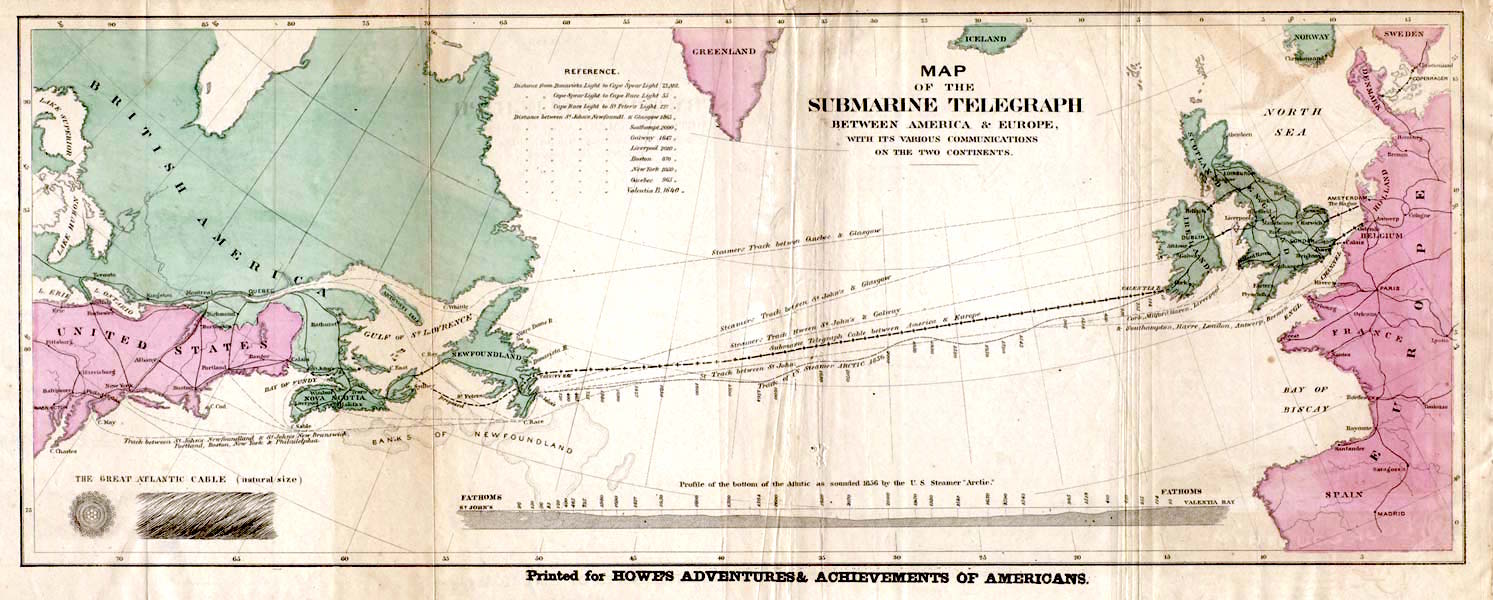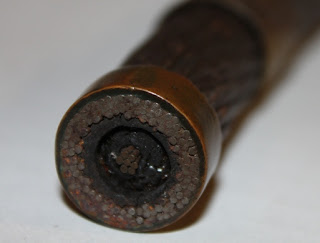 Every week at the History of Diving Museum seems to be a treasure hunt of sorts, as I am constantly uncovering new and exciting objects in the collections. This week was no exception, with the booty coming in the form of a small but significant artifact: an original piece of the transatlantic telegraph cable!
Every week at the History of Diving Museum seems to be a treasure hunt of sorts, as I am constantly uncovering new and exciting objects in the collections. This week was no exception, with the booty coming in the form of a small but significant artifact: an original piece of the transatlantic telegraph cable!The transatlantic telegraph cable was the first cable to allow telegraphic communications across the Atlantic Ocean between Europe and North America. It was a monumental achievement at the time, reducing message delivery time from days or weeks to mere minutes. A lasting connection was not achieved until 1866, but the first official message was sent on August 16, 1858, from Queen Victoria to President James Buchanan:
"To the President of the United States, Washington: The Queen desires to congratulate the President upon the successful completion of this great international work."
Keenly aware of the magnitude of this accomplishment, the President responded:
"May the Atlantic Telegraph, under the blessing of Heaven, prove to be a bond of perpetual peace and friendship between the kindred nations, and an instrument designed by Divine Providence to diffuse religion, civilization, liberty and law throughout the world."
The transatlantic cable was also one of the many underwater landmarks spied by Captain Nemo and the crew of the Nautilus in Jules Verne's Twenty Thousand Leagues Under the Sea. Considering that the History of Diving Museum has an entire exhibit dedicated to Verne's classic undersea adventure, the cable fragment's addition to the museum's collections was a "no-brainer," especially given its historical significance. This particular piece is from a "leftover" segment of the cable that was brought back up from the bottom of the ocean after Cyrus W. Field "overshot his mark" while laying it in 1858. Charles Tiffany (Tiffany & Co.) saw it as a money-making opportunity, buying the leftover cable and cutting it into four-inch lengths that he sold for fifty cents each. A "copyrighted facsimile certificate of Cyrus W. Field, Esq." accompanied each piece, guaranteeing its authenticity.
This exciting and historic artifact is an example of one of the many "behind the scenes" treasures at the History of Diving Museum. You'll have the opportunity to explore even more of them firsthand at our 6th anniversary celebration on September 3, 2011, where we will be displaying objects from our collection not normally seen on exhibit. We hope you can make it!





No comments:
Post a Comment